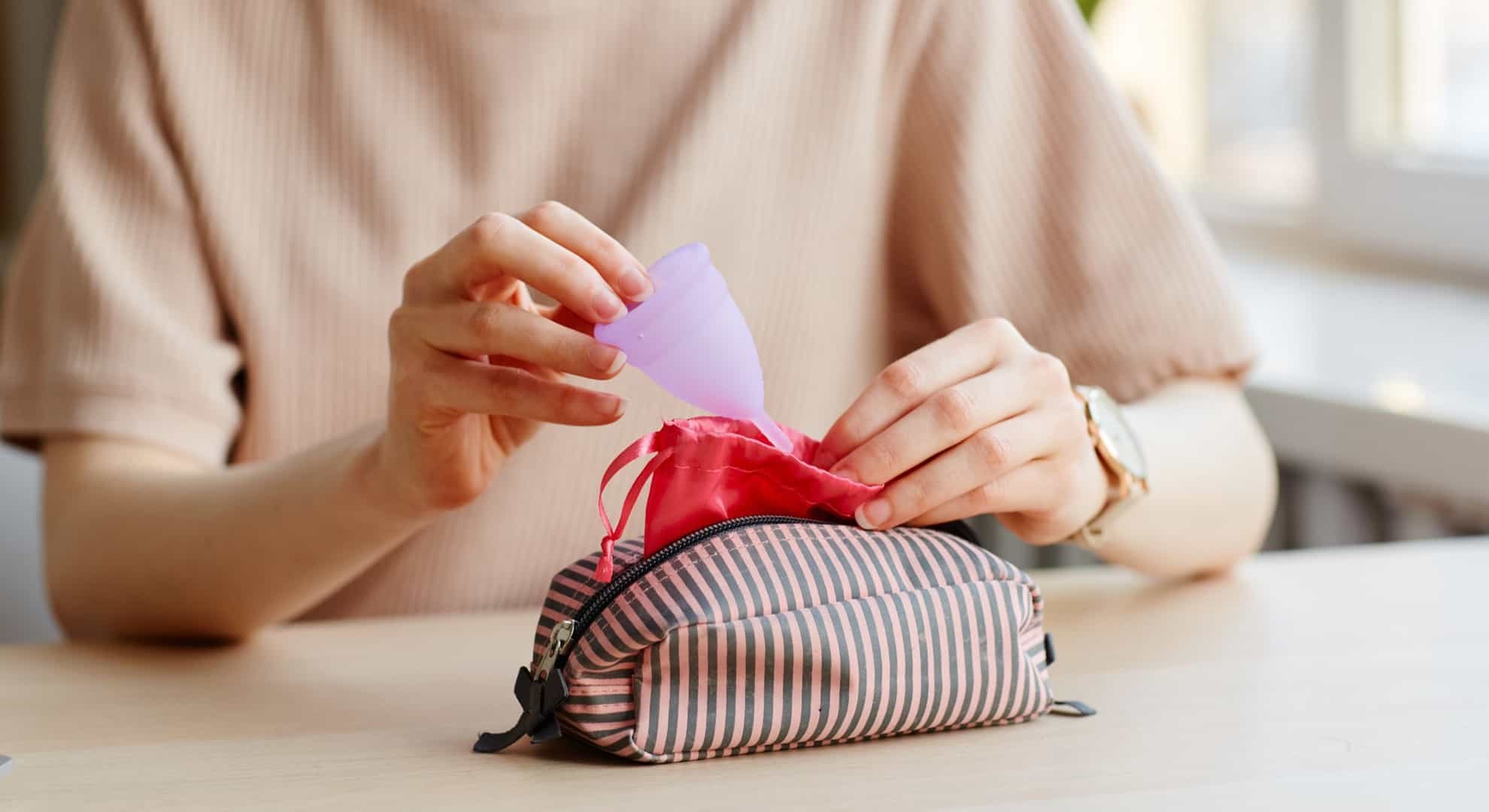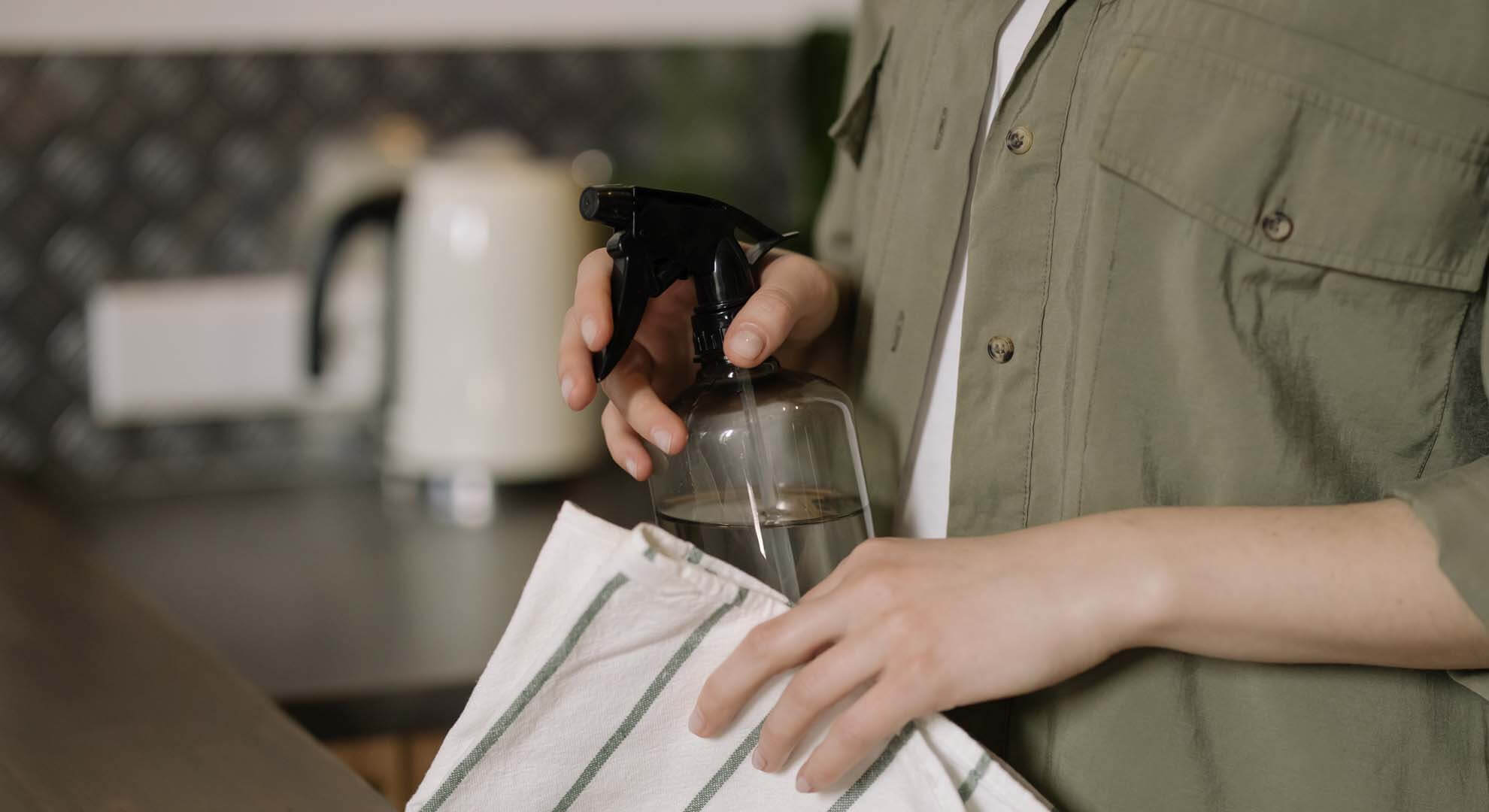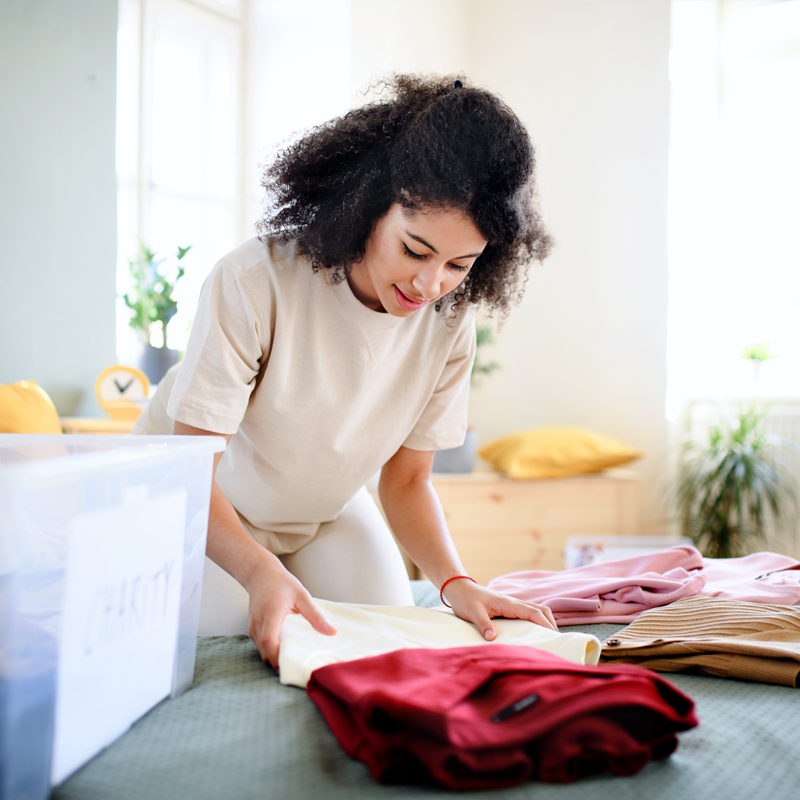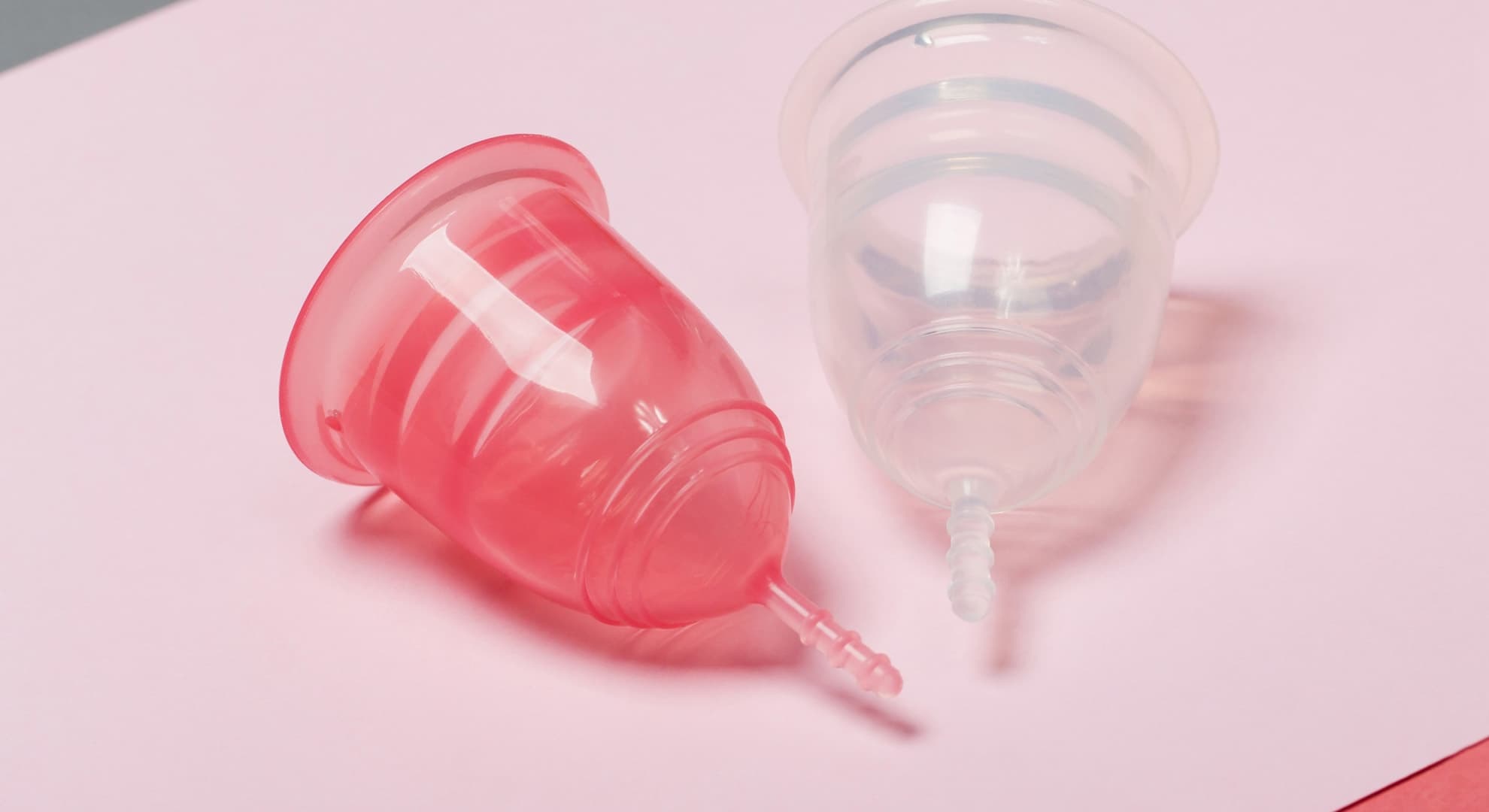
Menstrual cups
Why not try switching to a menstrual cup to manage your period?
Although it may look like a new concept, the idea of the modern period cup has been around for more than 80 years.
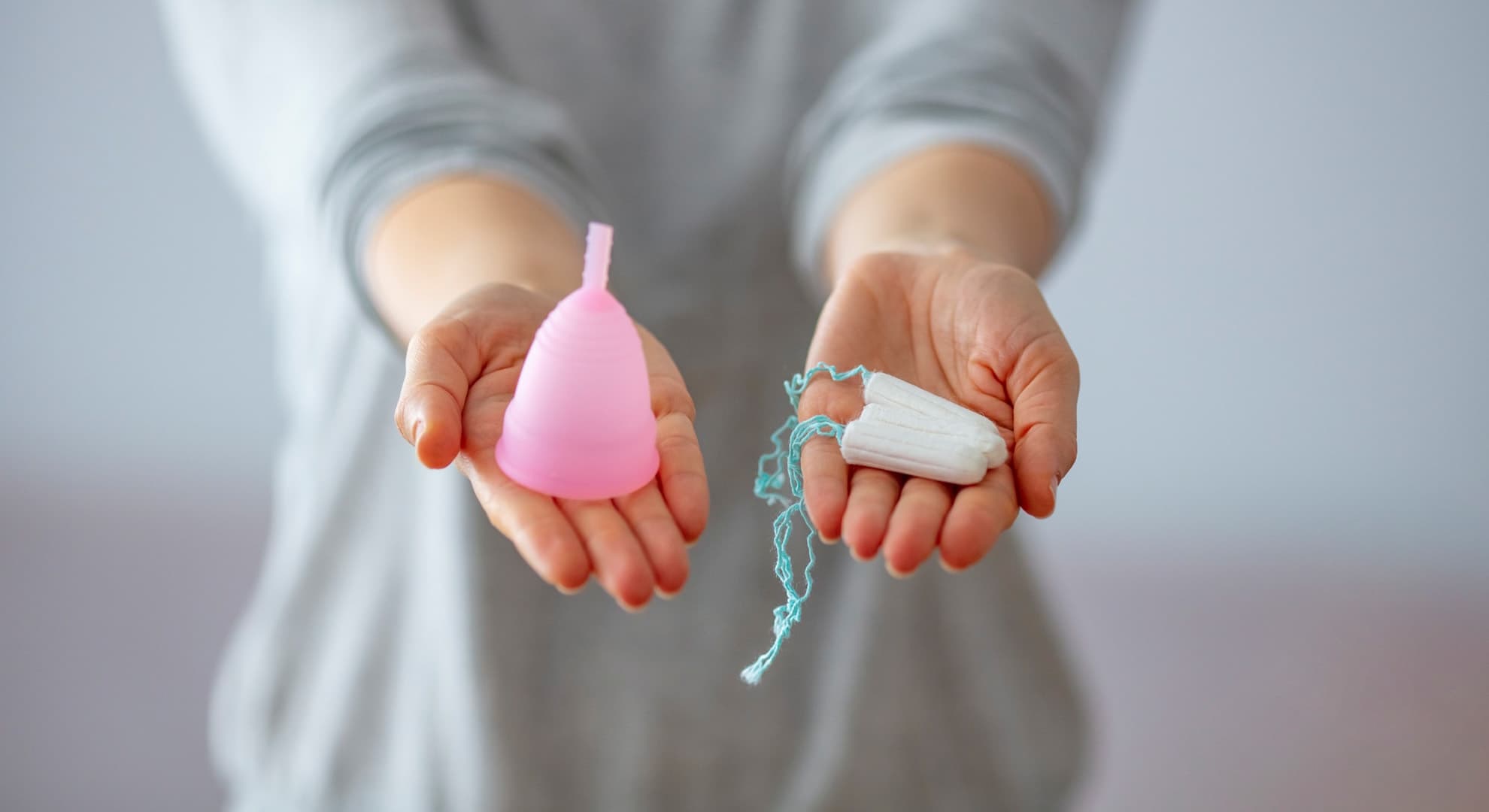
Menstrual cups
So, what is a menstrual cup anyway? Period cups are small, foldable cups that collect menstrual blood rather than absorbing it.
One of the most sustainable options when it comes to reusable period products, the menstrual cup can last up to 10 years. Based on a typical period scenario, we estimate a total spend of £440 on single-use period products over 10 years, but only £20 on average for two menstrual cups, a total saving of £420 over that time.
Donna's thoughts on menstrual cups
When I first the words ‘reusable menstrual products’, my initial thought was “how can that be hygienic?” but I was inquisitive enough to learn more. I also had no idea of the plastic content in tampons or towels. Putting the environment aside for just one second, this was enough for me to take notice.
Four months in and I’m a convert. I’m not going to pretend it was easy from the word go, but after reading some articles online and a few attempts – success! There’s no leakage – it feels and is hygienic and it’s so simple – I feel liberated. Not only do I feel it’s better for my body, but I know it’s better for the planet and my pocket.
My main piece of advice would be to get a sterilising cup from the outset. I started off using a saucepan which I then stored at the back of the cupboard. But after the constant questioning at teatime of; “You didn’t use YOUR pan to make this did you mum?” I invested in a sterilising cup on month 2!

Menstrual cup benefits
- Menstrual cups are made from medical-grade silicone and are just as leak-proof as tampons and pads
- Minimal maintenance – it takes just a few minutes in boiling water to sterilise at the end of your period and you’ll only need to empty your cup and give it a quick rinse every 10 to 12 hours, depending on your flow
- Many cup users say that they forget all about their period because they can wear it for so long without changing
- Great for the environment – switching from tampons to the cup for one year would reduce the carbon impact of your period product by around 90%. Cups are the reusable options with the least climate impact, although all reusable options are better than disposable ones.
Menstrual cup FAQ
Do I need to do anything before using my cup for the first time?
You should always carefully read the instructions that come with your menstrual cup regarding how to properly use it. Some brands may offer online videos demonstrating best practice for insertion and removal of your cup.
Before you use your menstrual cup, you should sterilise it in some boiling water for three to five minutes, then you're good to go. A top tip is to try it for the first time when you’re feeling relaxed and perhaps before your period comes, just to practice at putting it in without dealing with your flow too.
Can anyone wear a cup?
There are lots of different shapes and sizes of menstrual cups available on the market. Several retailers on the high street already stock reusable cups. Some people choose to try more than one brand to see what works for them. However, there may be another reusable option that’s better suited to you, so not to worry!
How do they work?
The menstrual cup is the reusable alternative to a tampon. The cup is inserted just like a tampon, but the cup collects the menstrual blood instead of absorbing it. The cup can then be easily emptied and reused and can last for up to ten years.
Can they leak?
Menstrual cups are leakproof as pads or tampons. Their shape and size mean they can securely hold your flow between changes. If leakage occurs, it’s usually because the cup hasn’t been inserted properly.
What keeps it in place?
The cup creates suction that holds it firmly in place, creating a no-fuss, leakproof period.
How long can I wear it for?
Depending on your flow, the advice on menstrual cups is that they can be worn for up to 8-12 hours. We would recommend checking with your chosen brand for their specific guidelines.
Are they safe?
If you have any concerns about health and safety of using menstrual cups, then please speak to a healthcare professional or GP.
How often do I replace my cup?
Reusable cups are durable and can last 5-10 years when they are looked after. To learn how to clean a cup, see ‘How do I keep it clean?’ below.
How do I remove my cup?
The first and most important thing you should do when removing your menstrual cup is to relax.
Once you are relaxed and ready, find a method that works for you in removing your menstrual cup. For some, it’s easy to squeeze the tip and release, or you could try pushing it to the side to remove the suction making it easier to remove. If you are having some difficulty, try lying on your back and tilting your pelvic bone upwards slightly.
How do I empty my cup when I am out and about?
If you are in public, try and find a toilet cubicle with a sink to allow you to empty your cup in the toilet, then clean thoroughly with warm water before reinserting. If this isn’t possible, we recommend carrying a small water bottle around with you to give it a rinse. You could also wipe it with loo roll. Just make sure you give it another clean when you get home.
Is it discreet?
Yes, when you’re in the bathroom, just empty it down the loo and give it a quick wipe if you can’t use a private sink. Also, because you can wear the cup for long periods of time, up to 10-12 hours, then you can manage cleaning it around your schedule.
How do I keep it clean?
To keep your menstrual cup super-hygienic, make sure you sterilise it in between periods. You can do this in a variety of ways: boiling water in a saucepan, a sterilising cup you can buy for the microwave or sterilising tablets.
How do I dispose of my cup?
Cups are made from medical grade silicone which is not currently widely recycled. If your cup has had its full use over the years and it’s time to say goodbye, then it’s the general waste bin (for now). You’ll still be reducing your waste by avoiding throwing away disposables.
Can I wear them if I have an IUD?
If you have an IUD, then it’s best to seek advice from a medical professional before using a reusable cup.

